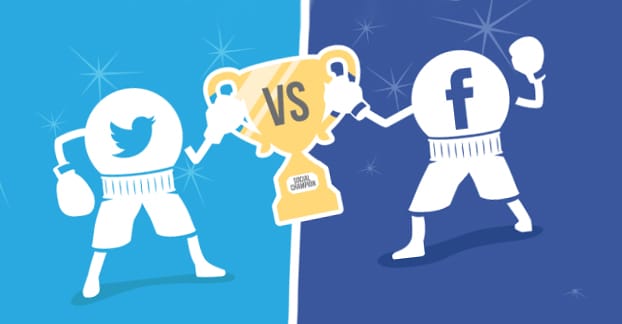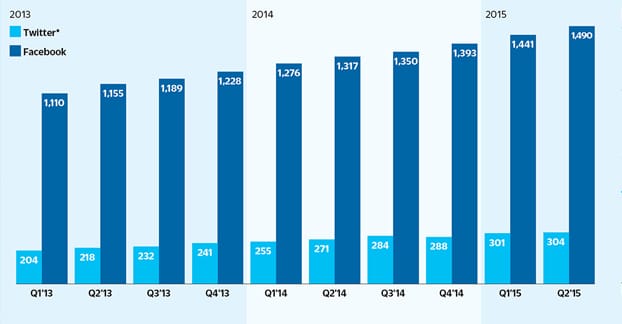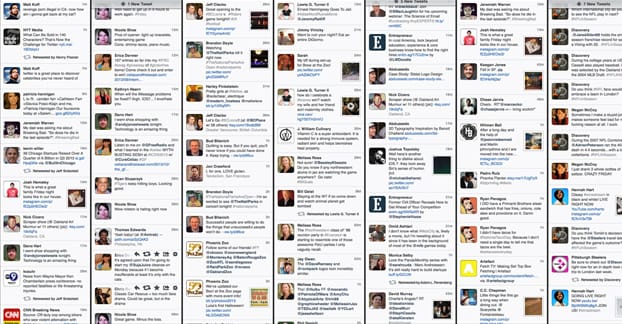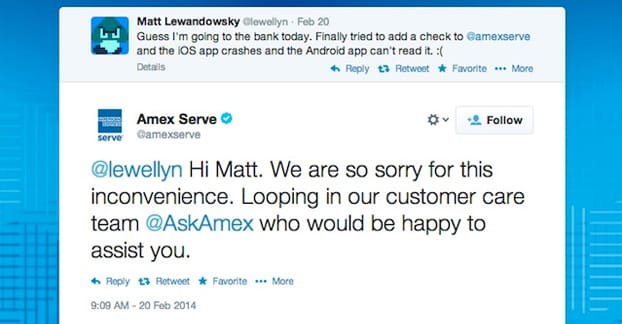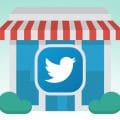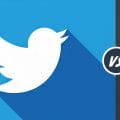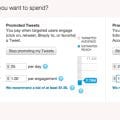This is a common question, and it’s one I’m going to approach from the perspective of having exactly enough budget in both time and money to invest fully in one of these platforms, but not both of them. Both Facebook and Twitter operate in different ways and can attract different people.
Before we begin, however, I just want to state up-front that you should really be using both of them. Neither is going to be strictly better than the other; it’s all a matter of industry, of branding, of audience, of participation, and of utilization. They have different methods of marketing and reach different kinds of users in different ways, so different chunks of your audience are present on each. In a way, it’s almost like the difference between SEO and PPC; sure, you can get by with one or the other, but it’s always better to use both.
Usage Statistics
Facebook began as a social networking platform for colleges, and expanded quickly to include friends and family. It was only later that celebrities, entities, brands, and individual products like movies gained a presence and were able to be marketed. Twitter started with complete openness, with only a mobile focus and the character limit left to restrict who used the site.
Facebook is currently the frontrunner in terms of sheer scope and scale. Where Twitter has somewhere around 300 million users, Facebook has well over a billion. Facebook also covers a wide range of demographics, including the expanding presence of seniors. However, Facebook is also slowly losing traction amongst the youngest users, who have migrated to sites like Twitter, but also to even more “hip” new social media, like Instagram and Snapchat. Twitter is also more popular amongst Latinos and Blacks. The Black Lives Matter movement took root and gained popularity on Twitter.
Twitter unfortunately also has issues with rampant abuse. The GamerGate movement, the recent white supremacist rumblings, and other issues have put its lack of moderation into focus. They’re getting better, but it’s a long and slow process, whereas Facebook has much more robust reporting and punishment options, including a lack of anonymity compared to Twitter.
Simplicity and Complexity
Twitter and Facebook are like two sides of a coin, if one side was essentially blank and the other was a detailed, intricate carving.
Twitter is a relatively simple platform. You have one core Twitter feed for each user. You follow people in a one-sided relationship. You don’t have to worry about in-platform apps, app requests, different layouts, different types of accounts, or all the rest of that stuff. You’re able to be as anonymous as you wish, as determined by how much accurate information you add to your account. There are benefits to being a real person – just take a look at the last few weeks worth of posts about verification – but it’s not necessary to use the site.
Facebook, on the other hand, is a haven for complexity. They’re trying to become a central pillar of Internet usage in a variety of different forms. Their acquisition of Instagram gave them a lot of power in the image space. Their videos have been pushed to the point of being a rival to YouTube. Their livestreaming is now integrated with several platforms, including Blizzard’s Battle.Net gaming service. Their app platform is quite robust and hosts a number of different types of utility apps, including tools, task apps, storefronts, and games. Their news feeds include family and friend posts, business posts, and a whole lot more. Their trending engine has seen some recent issues, but is a reliable feed for some current events. They’ve even tried to implement a publishing engine to become a speed-focused blogging platform on top of it all.
Facebook also doesn’t allow you much anonymity in the personal space. They allow fake people accounts, in the sense that with over a billion users, it’s simply inefficient to police it all. When an account becomes problematic, they take action. They do this in part because they harvest an immense amount of personal data about every user on their platform, more so than anyone else, even Google.
Multiplicity
Facebook has issues with making multiple accounts, sort of. They have some restrictions, in that you can only have one personal profile, but you can have as many Pages – for brands, for businesses, for events, etc – as you desire. Twitter, meanwhile, makes it easy to make as many accounts as you want for as many purposes as you want. You can have a serious personal account, a casual personal account, a brand account, a customer service account, and a side account for sharing memes, and there’s nothing wrong with that at all. They’re not tied together beyond the fact that you own them, whereas every Facebook Page is tied to a profile.
Attention
Facebook is designed to be a hub for attention. It’s made to be a drain on time. It’s focused on keeping people there, and keeping people coming back. Facebook users tend to spend quite a bit of time on Facebook, and posts can be longer and more detailed than they are on Twitter.
Twitter’s mobile focus, it’s character limit, and its personality all combine to push it in the casual direction. It’s more like an elevator pitch. You have a few seconds to capture attention, portray meaning, and share content. People can browse through hundreds of posts an hour with ease.
Filtering
Twitter is a relatively unfiltered feed. I say relatively because they introduced a filtered feed option, enabled by default, some time last year. This caused a lot of uproar for a couple of weeks, then was forgotten. Twitter’s feed is not really filtered, it’s just designed to promote timely content first, with value coming in second.
Facebook, meanwhile, heavily filters and sorts its content. A business can expect to reach only about 6% of its audience at best, without paying for additional exposure. Users only see around 300 posts per day as active users, out of a potential average of over 1,500 they could see if the Facebook feed was unfiltered.
Of course, due to this filtering, both sites have very different ideal numbers of posts per day. Facebook posts stick around for a while. They linger. As such, it’s generally considered ideal if you only post 1-2 times per day, lest you risk posts being filtered or flooding your followers.
On the other hand, Twitter posts are fleeting and temporary. Sure, a user can scroll back in your feed to see everything you’ve said, but chances are they won’t unless they really like you. Someone following 100 people, each of whom post 5 times a day, isn’t going to scroll through 500 posts every day. They’re going to do a few dozen or a hundred, then wait a while and monitor what new content comes in. As a consequence, brands are encouraged to post more often, to catch people as they come and go. There’s no algorithm suggesting older posts to users when they sign on, at least not nearly on the same level as Facebook’s. There’s the “while you were away” box, but that only shows half a dozen or so tweets.
Growth
Facebook is a platform with a ton of noise and very few discovery options. If you want to make any headway as a business on the site, you need to have a lot of external options for promoting yourself to your audience. That, or you need to spend money on Facebook ads.
Don’t get me wrong. Facebook ads are some of the most robust and effective ads you can buy anywhere online. The immense amounts of personal information Facebook harvests can all be used as targeting factors for those ads, allowing you to reach out and connect with the specific people you want to reach, whether they follow you or not.
By contrast, Twitter ads are relatively basic, but Twitter organically has a lot more discovery. There are suggested profiles, there are retweets, yes, but Facebook has those too. The main emphasis is on hashtags, which Twitter is organized around. People are used to clicking on hashtags and exploring the content they find, unlike Facebook, where search is used much more like a search engine with a defined goal in mind.
Twitter is best for organic growth with a small budget to supplement it, but that growth leads to only a minimal amount of engagement. It’s all designed to funnel people to the next step, typically browsing your site directly.
Facebook, meanwhile, fosters deeper engagement on the site itself, with the option to refer people to your site. On the other hand, if you want to grow at all, you’re going to have to put money into it.
Purpose
Facebook is great for creating one centralized channel. Everything happens either on Facebook or on a website your Facebook account links out to. If someone approaches you with a customer service complaint on Facebook, you either handle it in private messages, or you refer them to your CS form on your website. People engage with you, or they go to your website to engage with you there. Sooner or later, though, it ideally all comes back to Facebook.
Twitter allows different purposes. You can center your account around engagement. You can turn your account into a curated content engine, sharing industry content to cement your brand as one that is aware of what’s going on in the world. You can turn into a news account, sharing what’s new in your industry. You can reach out and connect primarily with other business owners and their brands, making it great for B2B, much more so than Facebook. You can have an account dedicated to customer service, and in fact Twitter is one of the best places for CS on the web.
Video content is a perfect microcosm of this. Facebook videos are lengthy or even infinite, if you consider a lifestream infinite as long as it goes on. Videos posted can be very long, and are often anywhere from 3-15 minutes in length. By contrast, Twitter videos are Vines, which cap out at 6 seconds. It’s made with speed and brief acknowledgement in mind. Vine storytellers get incredible amounts of engagement, but they’re still little more than modern animated gifs with audio. Twitter has Periscope for livestreaming, but frankly it’s much less used than lengthier videos on Facebook, or streaming through another service like Hitbox or Twitch, or even YouTube itself.
The Summary
To sum things up, let’s look at broad strokes. Facebook has a lower organic reach than Twitter, but has a much greater potential audience, so that if you build up a sufficient base, you can reach far more people even at a lower rate. However, audiences being of equal size, Twitter has the advantage in terms of reach.
Facebook is better for lengthy engagement, but you really need to work to get and keep that engagement in place. Twitter is a much more causal platform, easy come and easy go, some posts high and some posts low. Whichever way the comments go, Facebook is likely to spur more conversations that people come back to later on down the line. Twitter conversations are a flash in the pan, happening quickly and dying out just as fast.
Twitter has the more active mobile and youth demographics, though Facebook is rising in mobile engagement. Facebook is the best for seniors, if your business happens to focus on their demographic primarily.
So which one is better for your small business? It depends. If you’re angling for older viewers, if you want lengthier engagement, and if you have no need of a secondary stream for customer service, Facebook is your platform. It’s also ideal if you have money to spend on ads. Twitter, meanwhile, is better for growing an initial presence, particularly among more mobile and active users and younger users. On the other hand, paying for ads isn’t going to get you quite the same return on investment, nor do you have as much targeting data to work with.
Which one do you figure is best for your business?
